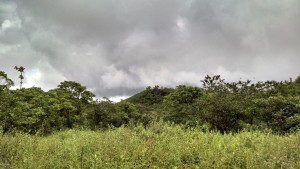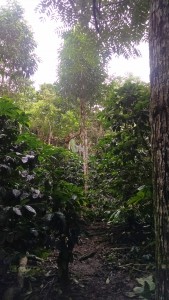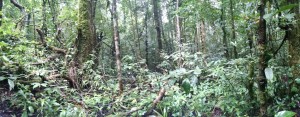The school part ended a couple days ago, when we submitted our paper. The program is still running, we still have to write this post but we are finished with our research. It is hard to believe that we actually went through and finished our research.
When we arrived Las Cruces, we realized that we dreamed too big for our methodology but that is alright because we can change it to match with what we have to work with. We adjusted our methodology a lot.
Eventually, we reduced our sites to three – abandoned pastures, coffee farms and primary forests because we are focusing on land use by humans. Secondary forest wasn’t exactly a fit in for land use’s definition we looked for.
After a couple days of dragging ourselves out of bed when outside is still dark (what were we thinking?) and traipsing through rainforest with our heads looking up all the times for a few days (an impressive feat since none of us fell… more than a few times) – we found no significant results with birds but it is for trees.
Primary holds the most total trees and the least at coffee farm, which also is true for fig trees. We found high number of fig trees at pastures and we were told that the pasture used to have fig trees as part of a fence. We thought that might why there were so many fig trees at the area and it could mean having fig trees as part of a fence or a farm helps the restoration of the forest because fig trees would attract animals. We noticed that there are more birds when there are higher number of fruiting fig trees and/or various of fruit plants in an area, which was what we expected to see.
Also, even though it was not statistically relevant – we noticed that birds were loudest at Las Alturas (the primary forest) compared to other two sites. I noticed that myself with my hearing aids, that I hear louder and closer noises from birds at primary forest (like right above me) than when I was at pasture. I could hear birds but they were at distance and I couldn’t tell the direction. That is how we know there are birds in primary forest but we can’t see them well through the dense vegetation. It could be something future studies can look into – bird noises with type of habitats.
I think we did our best with what devices and skills we have to do the research and it was a learning experience! Like a pair of rainboots is really useful to cross a stream.
And, if I am to be honest, I am really impressed with Eric for counting the total of 735 trees in one of our transects. I don’t know how I can do that, I would have stopped counting at 50.
Pura Vida!


